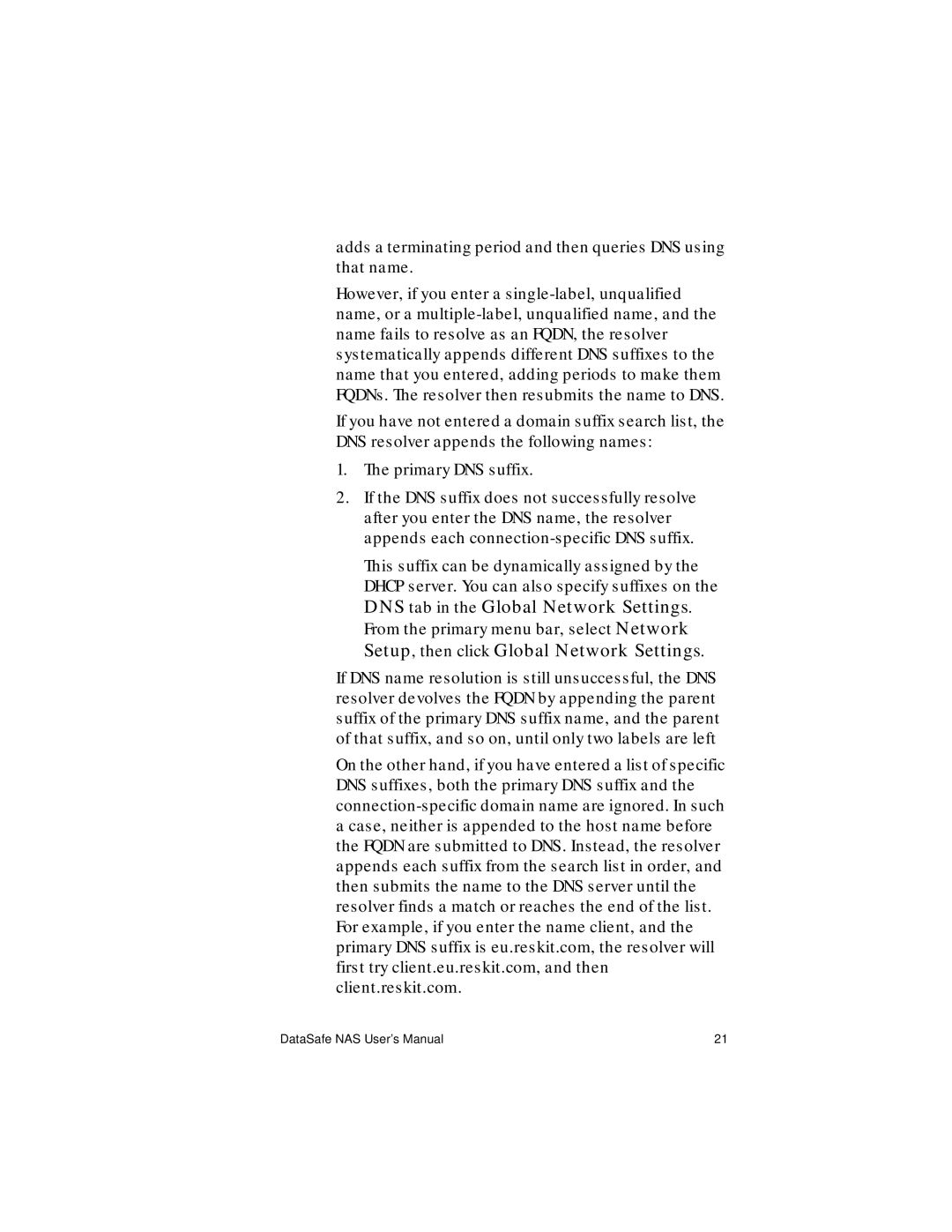adds a terminating period and then queries DNS using that name.
However, if you enter a
If you have not entered a domain suffix search list, the DNS resolver appends the following names:
1.The primary DNS suffix.
2.If the DNS suffix does not successfully resolve after you enter the DNS name, the resolver appends each
This suffix can be dynamically assigned by the DHCP server. You can also specify suffixes on the
DNS tab in the Global Network Settings. From the primary menu bar, select Network Setup, then click Global Network Settings.
If DNS name resolution is still unsuccessful, the DNS resolver devolves the FQDN by appending the parent suffix of the primary DNS suffix name, and the parent of that suffix, and so on, until only two labels are left
On the other hand, if you have entered a list of specific DNS suffixes, both the primary DNS suffix and the
DataSafe NAS User’s Manual | 21 |
